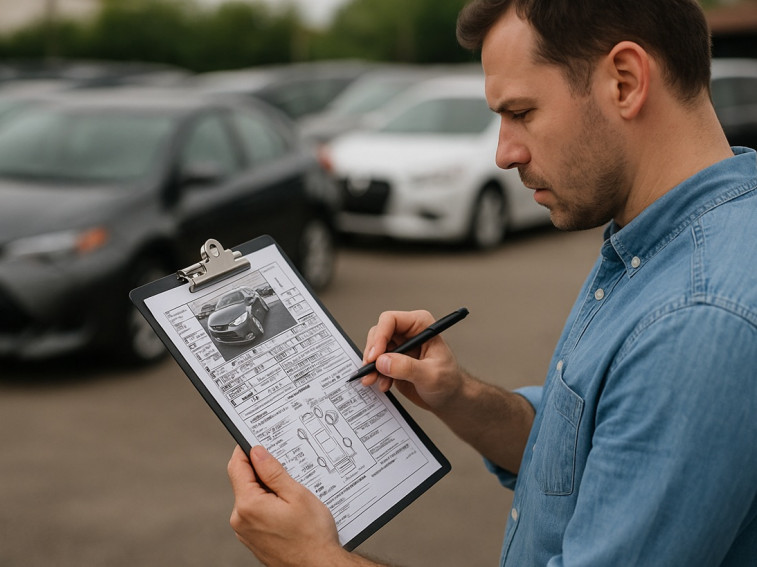Car auctions can feel a bit overwhelming at first glance. The buzz of the room, the clock ticking, and a flood of details packed into each listing. But truth be told, those listings are your best friend. They’re like a car’s CV: they don’t always tell you every bad habit, but they give you the bones of the story. Once you learn how to read them properly, you’ll see whether a motor’s worth your bid or whether it’s likely to drain your wallet later.
The Basics of Car Auction Listings
What Auction Listings Really Show
Every listing is designed to help you weigh up a car quickly. They’ll tell you:
-
Vehicle details: make, model, year, registration.
-
Mileage and usage history: service stamps, accidents, and maintenance.
-
Condition notes: bodywork, engine, and interior faults.
-
Auction rules: collection times, reserve prices.
-
Photos: proof of condition, if you know where to look.
It’s not just a catalogue, it’s your starting point for judging whether to bid or walk away.
Understanding Auction Jargon
Auction sheets often use trade lingo that can trip people up. Here are a few you’ll see often:
-
Salvage Title – the car’s been in a major accident or damaged.
-
Clean Title – no big accidents recorded.
-
As-Is – no warranty, what you see is what you get.
-
Reserve Price – lowest amount the seller will accept.
-
Market Value – guide based on recent sales.
Once you’ve got these down, the rest of the listing makes a lot more sense.
How to Research Before Bidding
Compare Similar Cars
Don’t just look at one car. Check others with the same make, model, and age. If one’s a lot cheaper, ask yourself why: higher mileage? More damage? Or just a bargain waiting for someone sharp-eyed?
For a wide range of options, take a look at our vehicle auctions.
Dig Into the History
A service history can tell you if a car’s been looked after or neglected. If the mileage looks suspiciously low for the age, that’s worth questioning. Always check that the paperwork matches the story in the listing.
Spotting Red Flags in Car Auction Listings
A listing can look tempting, but small clues make a big difference. Watch out for:
-
Vague details: “some damage” without specifics.
-
Too many faults: endless problems listed.
-
Suspiciously low price: often means hidden issues.
If anything feels off, pause. There’ll always be another car tomorrow.
Using Photos the Right Way
Photos aren’t just window dressing; they’re the closest you’ll get to inspecting the car before bidding. Look for:
-
Multiple angles (front, back, sides).
-
Close-ups of engine, interior, and wheels.
-
Signs of rust, misaligned panels, or dodgy repairs.
If photos look blurred or overly edited, that’s usually a warning sign.
Stories from the Trade
I’ve seen plenty of people trip up by trusting the glossy parts of a listing.
The Rusty Hatchback
Years ago, I spotted a hatchback with clean photos and low mileage. Looked like a bargain. But the listing mentioned “minor cosmetic wear.” I went to see it, and sure enough, rust creeping along the wheel arches. The photos hid it, but the wording gave it away. Saved myself a costly mistake.
The Bargain Van
On another occasion, I picked up a van that looked average on paper. Mileage was high, yes, but the service stamps showed it had been a fleet vehicle with regular upkeep. Turned out to be one of the most reliable motors I ever bought at auction. Sometimes the story between the lines matters more than the headline.
Smart Bidding Strategies
Set Your Budget First
Always know your ceiling. Go in with a number and stick to it. Auctions are fast, and it’s easy to get carried away.
Check out our car auctions to practise budgeting across different models.
Learn Auction Timing
Some bidders jump in early, others wait until the last second. Either way, patience pays. Don’t let adrenaline push you over budget.
Use Technology
Many platforms (including RAW2K) let you set proxy bids. It’s like having a mate raise your hand for you , keeps you in the game without losing control.
Reading the Fine Print
The fine print matters more than most people realise. Always check:
-
Collection deadlines (to avoid storage fees).
-
Buyer’s fees or admin charges.
-
Any notes about missing documents (like logbooks).
For more info on terms, see our help section.
Building Your Auction Know-How
Like anything, reading listings is a skill you sharpen with practice. Start by:
-
Setting clear goals (personal car vs. business fleet).
-
Keeping a checklist of what to look for (mileage, service, condition).
-
Watching market trends for pricing patterns.
-
Reviewing each auction experience, win or lose.
With time, you’ll get faster at spotting value and avoiding duds.
Final Thoughts: Reading Listings Like a Pro
Auction listings can look complicated, but once you know the signs, they’re straightforward. They tell you what the car is, what it isn’t, and whether it’s worth your bid. Read carefully, trust your instincts, and don’t rush.
At RAW2K, we’ve made it easier by offering clear listings, detailed disclaimers, and a wide range of vehicles to suit every buyer. Do your homework, keep your cool, and you’ll soon be bidding with the confidence of a seasoned pro.




